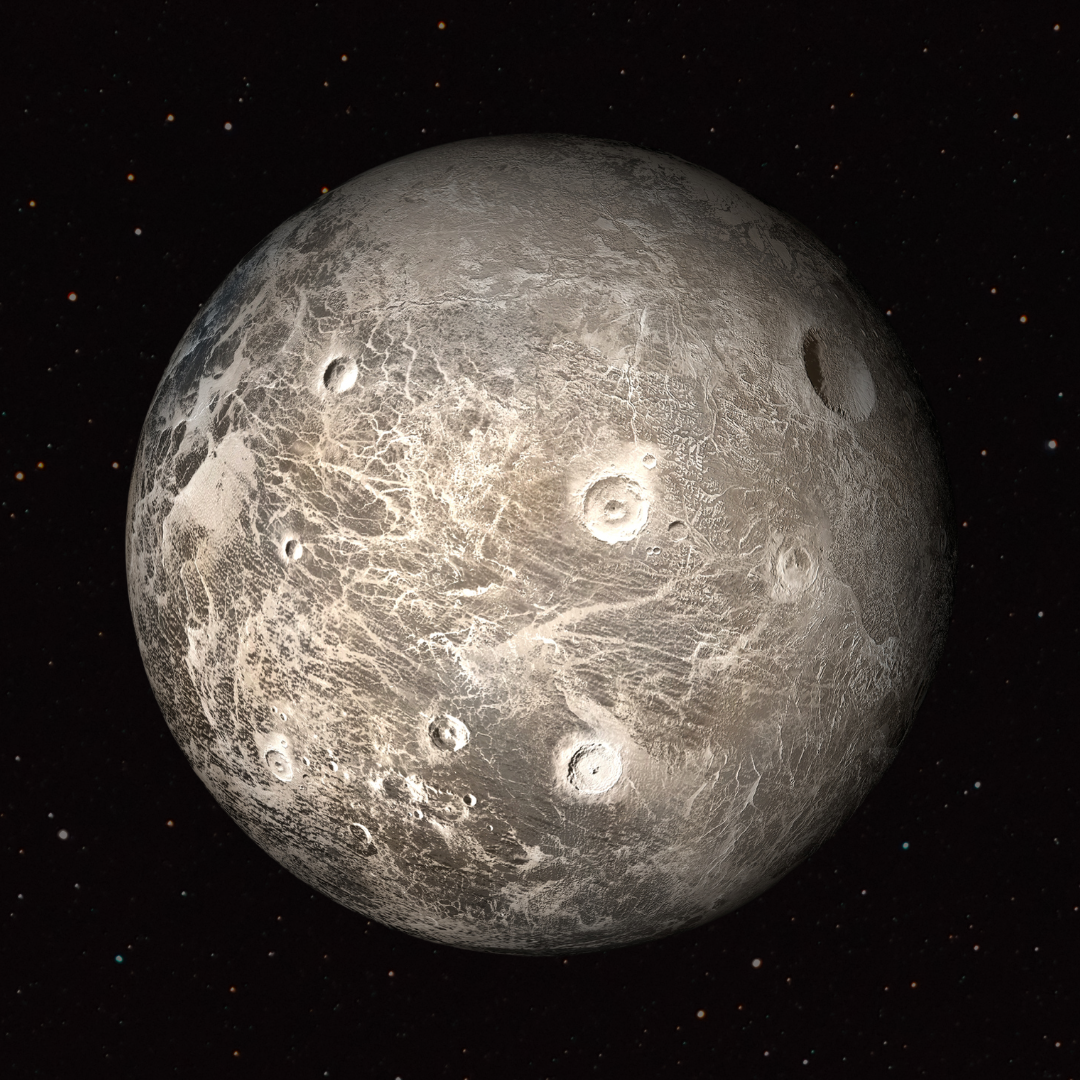
Solar System: Ceres
Ceres was discovered on January 1, 1801, by Italian astronomer Giuseppe Piazzi. Initially classified as a planet, Ceres was later reclassified as an asteroid and, more recently, as a dwarf planet. Located in the asteroid belt between Mars and Jupiter, Ceres is the largest object in this region, accounting for approximately 40% of the asteroid belt's total mass.
- Properties of Ceres
Ceres has an average diameter of about 590 miles (940 kilometres), making it the smallest of the five officially recognised dwarf planets in our solar system. It has a relatively short orbital period of 4.6 Earth years and a rotation period of approximately 9 hours. Ceres's composition is a mixture of rock and water ice, with an estimated 25% of its mass being water. The dwarf planet features a thin atmosphere, primarily composed of water vapour, which is thought to be released by sublimation or volcanic processes.
- Formation of Ceres
Ceres is believed to have formed approximately 4.6 billion years ago from the solar nebula's remnants. As a protoplanet, it is considered a survivor of the early solar system and could provide insights into the processes that shaped the formation of planets. The presence of water ice on Ceres suggests that it may have experienced significant thermal evolution and differentiation, with the potential for a subsurface ocean in its past or even present.
- Exploration of Ceres
NASA's Dawn mission, launched in 2007, was the first spacecraft to visit Ceres, arriving in orbit in 2015. The mission provided unprecedented data on Ceres's surface features, composition, and geology. Among its most significant discoveries were the bright spots within Occator Crater, which were identified as deposits of sodium carbonate, and the detection of water ice at high latitudes.
The Dawn mission also revealed signs of past and possibly ongoing cryovolcanism, with the large, dome-shaped feature Ahuna Mons being a prime example of a cryovolcano. These findings have raised questions about the potential for astrobiology on Ceres, as the presence of liquid water, even if only in the past, could have provided a suitable environment for life.
